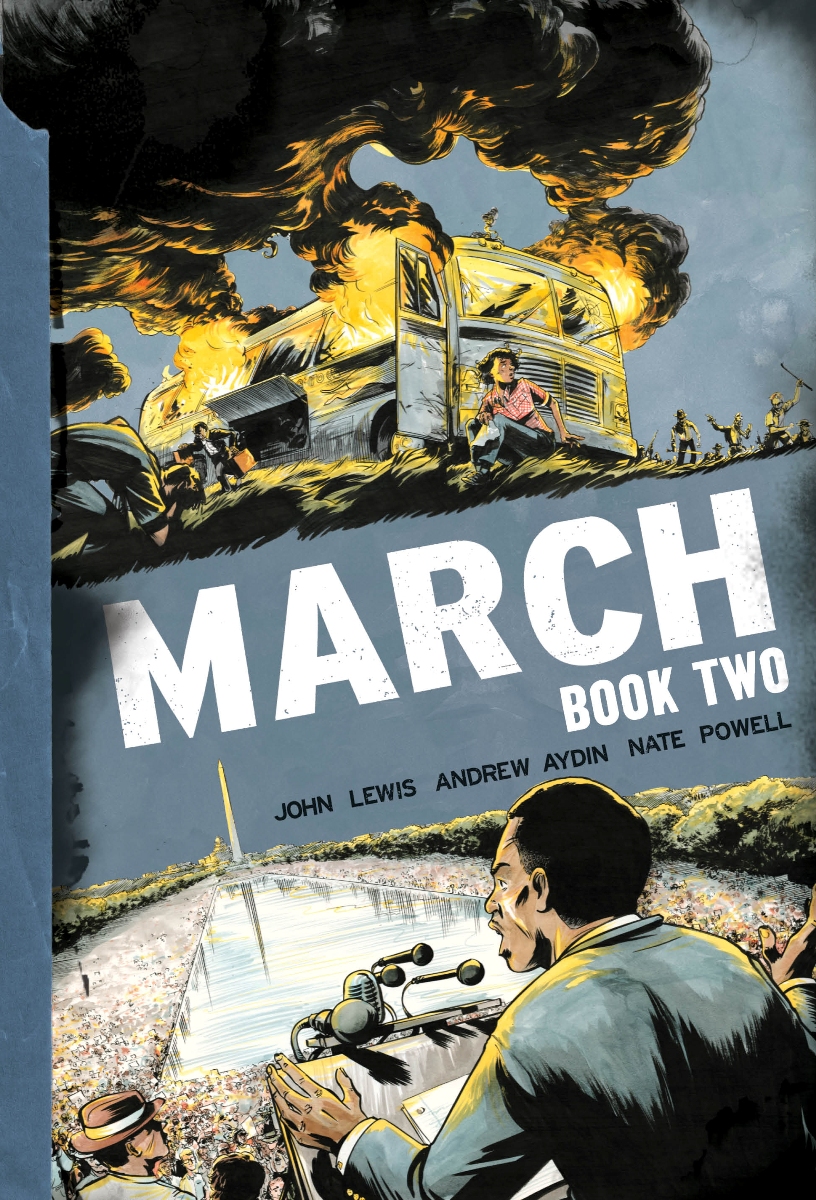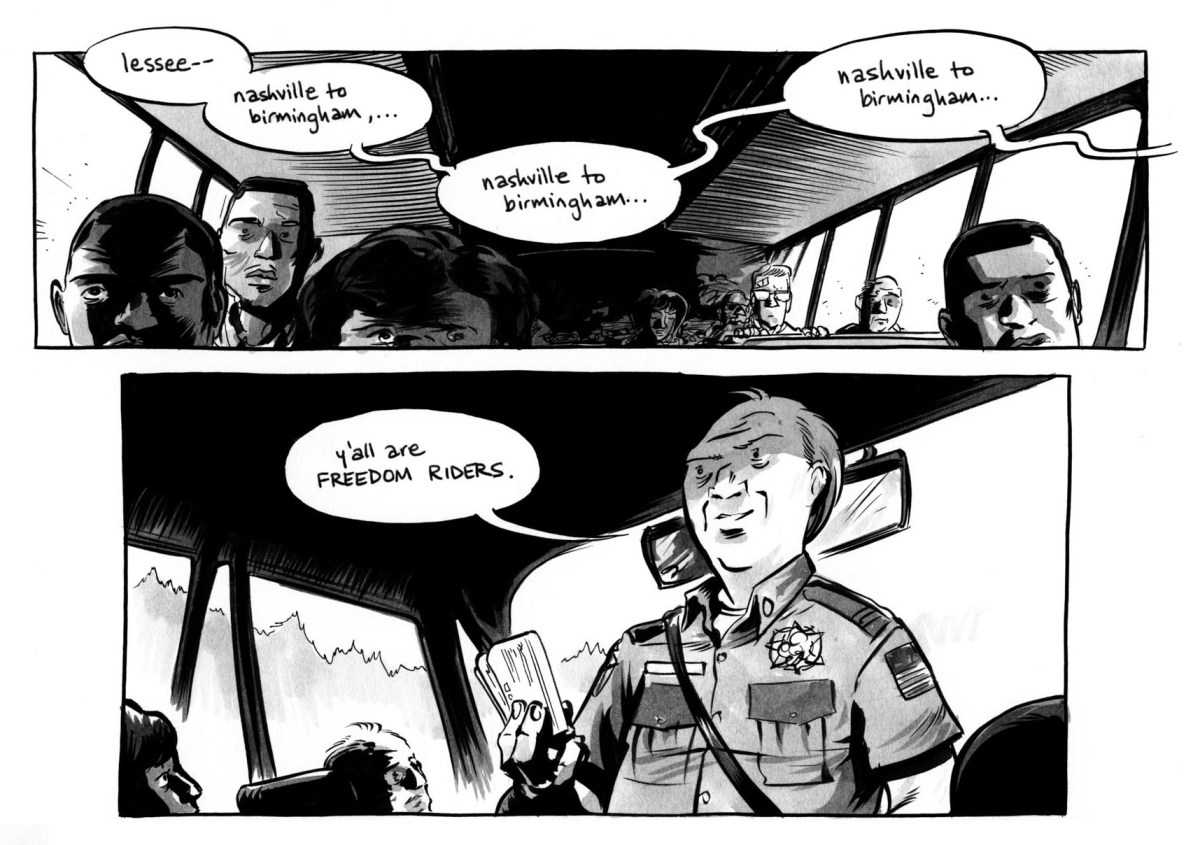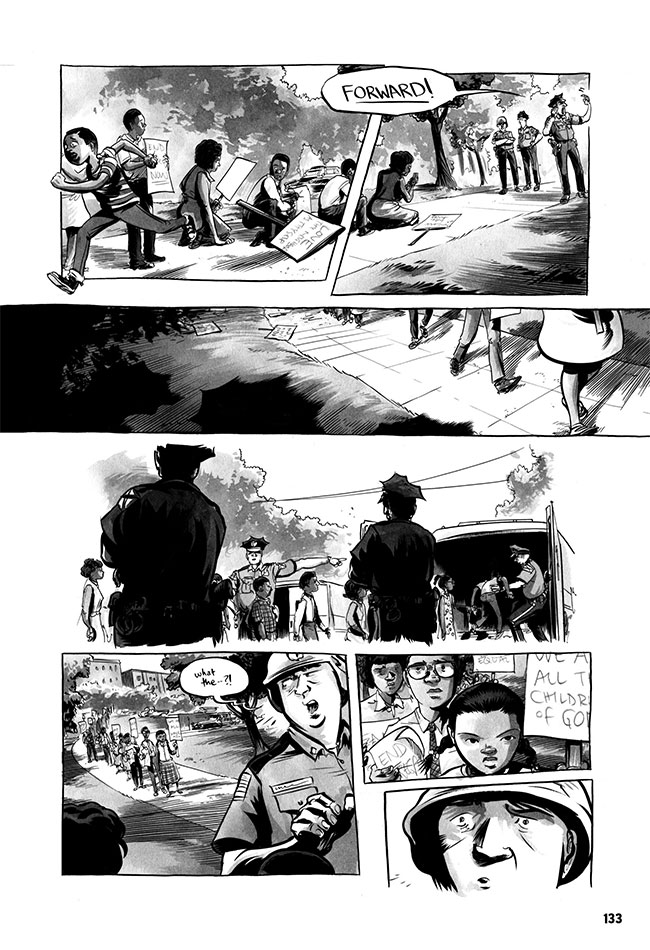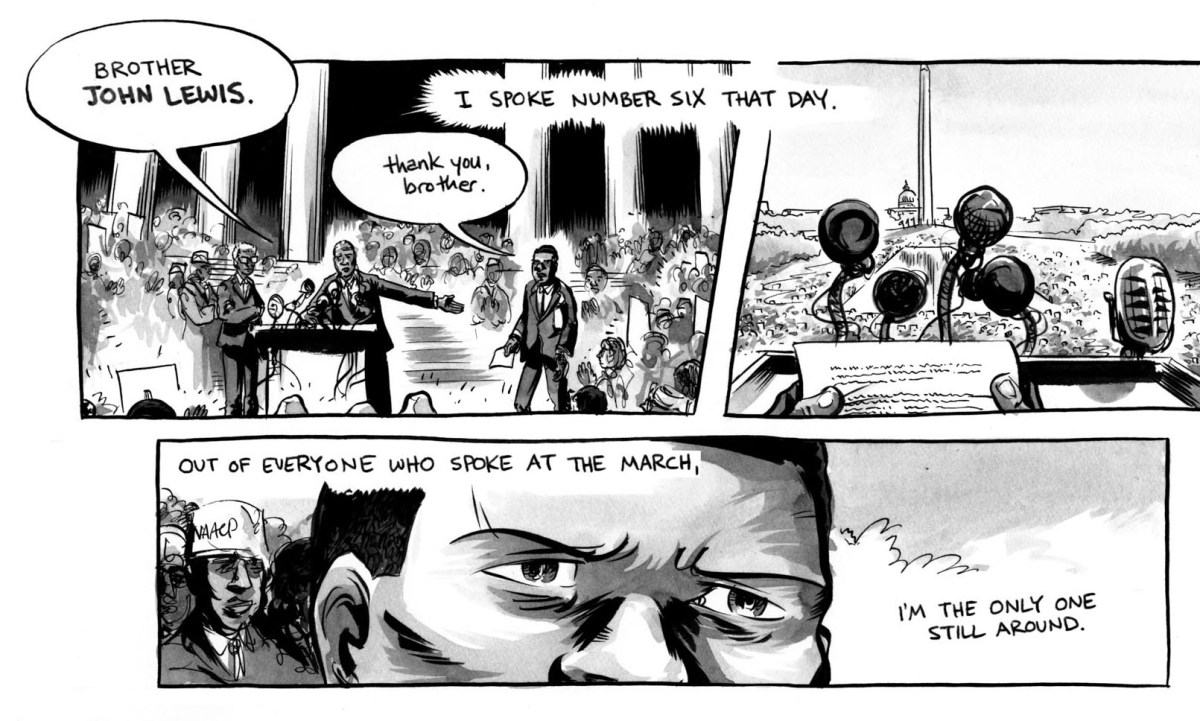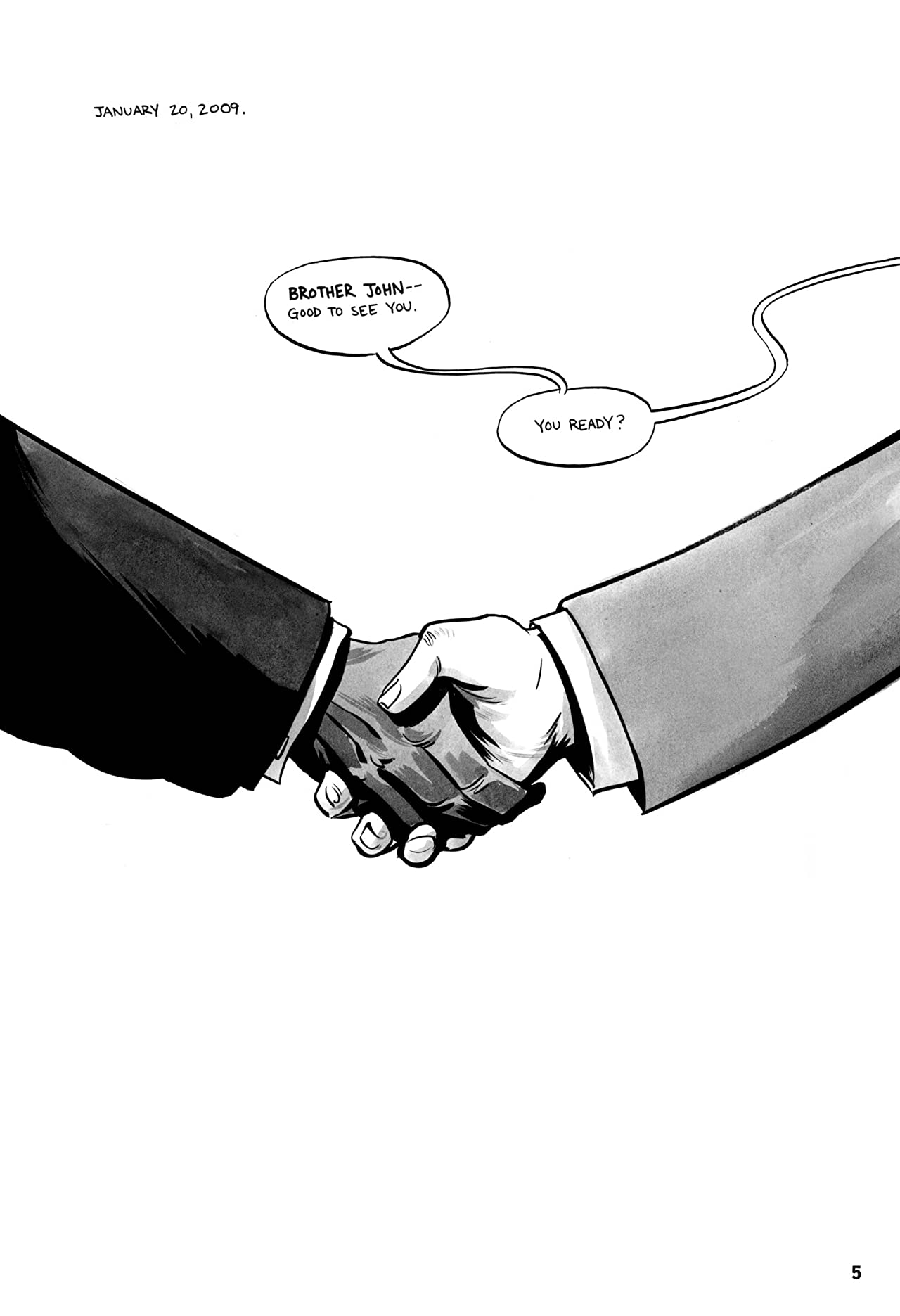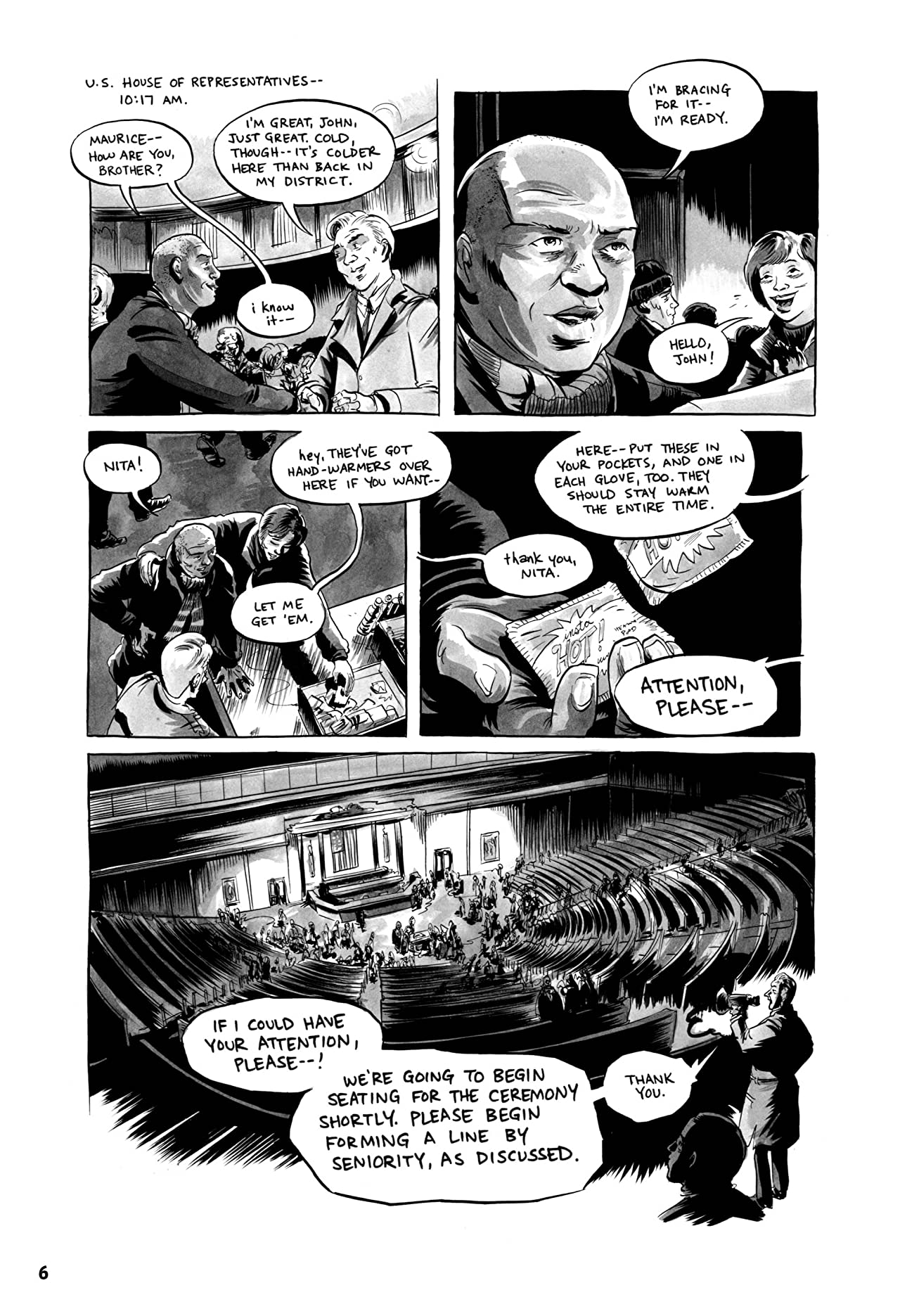John Lewis calls March "our road map" to the civil rights movement
The civil rights legend discusses the second volume of his autobiographical Top Shelf graphic novel, and the state of race relations in America
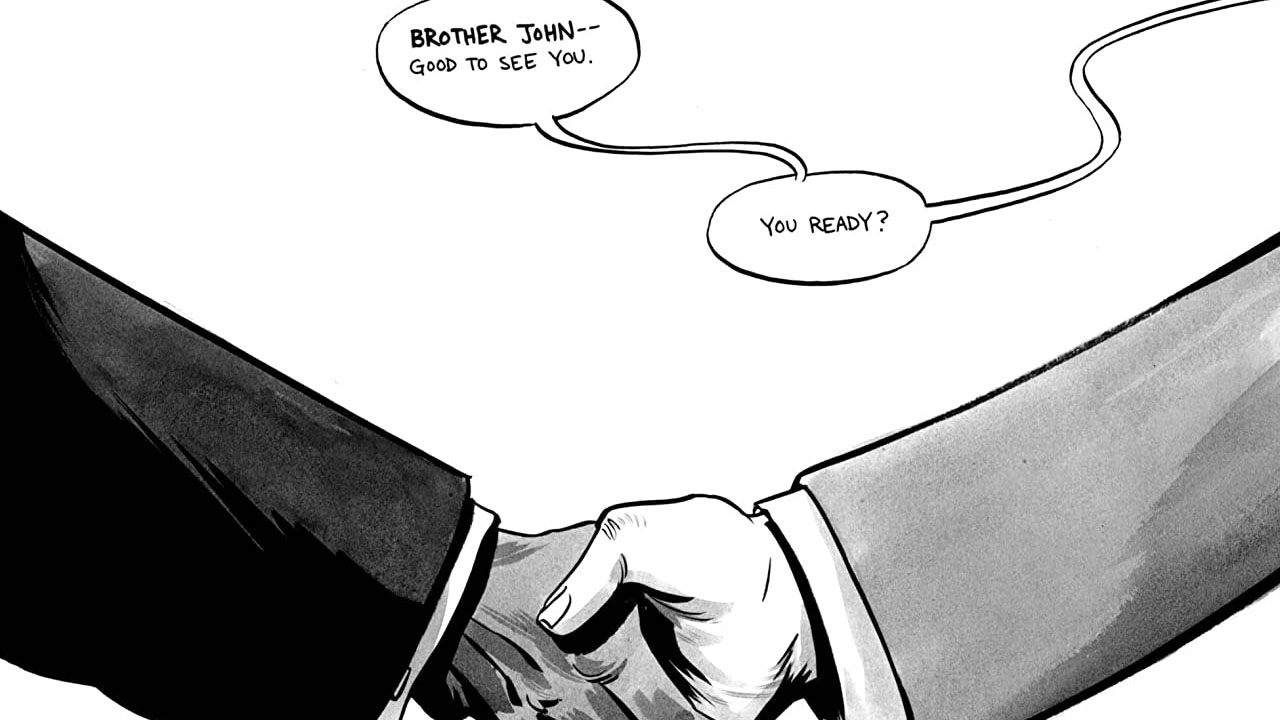
United States representative John Lewis has told his story before, but is doing so again - and in detail - using comic books in the award-winning graphic novel series March.
The second volume (of a planned three) hits shelves this Wednesday, continuing Lewis' story as adapted by his aide Andrew Ayden and artist Nate Powell. March: Book Two brings to life some of the most harrowing incidents of the civil rights movement in the United States, as Lewis and others traveled the South - their very lives at risk - as they attempted to non-violently protest segregation. The story is intercut with Lewis' appearance at Barack Obama's presidential inauguration in 2009.
Rep. Lewis, whose life and experiences are also depicted in the acclaimed film Selma, took a few minutes out of his busy schedule to talk to Newsarama about reliving his past through this book, the importance of recalling the Civil Rights Movement in America today, and his regard for the comic book format.
Newsarama: Congressman, thank you for your time. My first question is: You've had a little time since March: Book One came out, and what has been the most interesting response/most interesting example of its impact that you've seen?
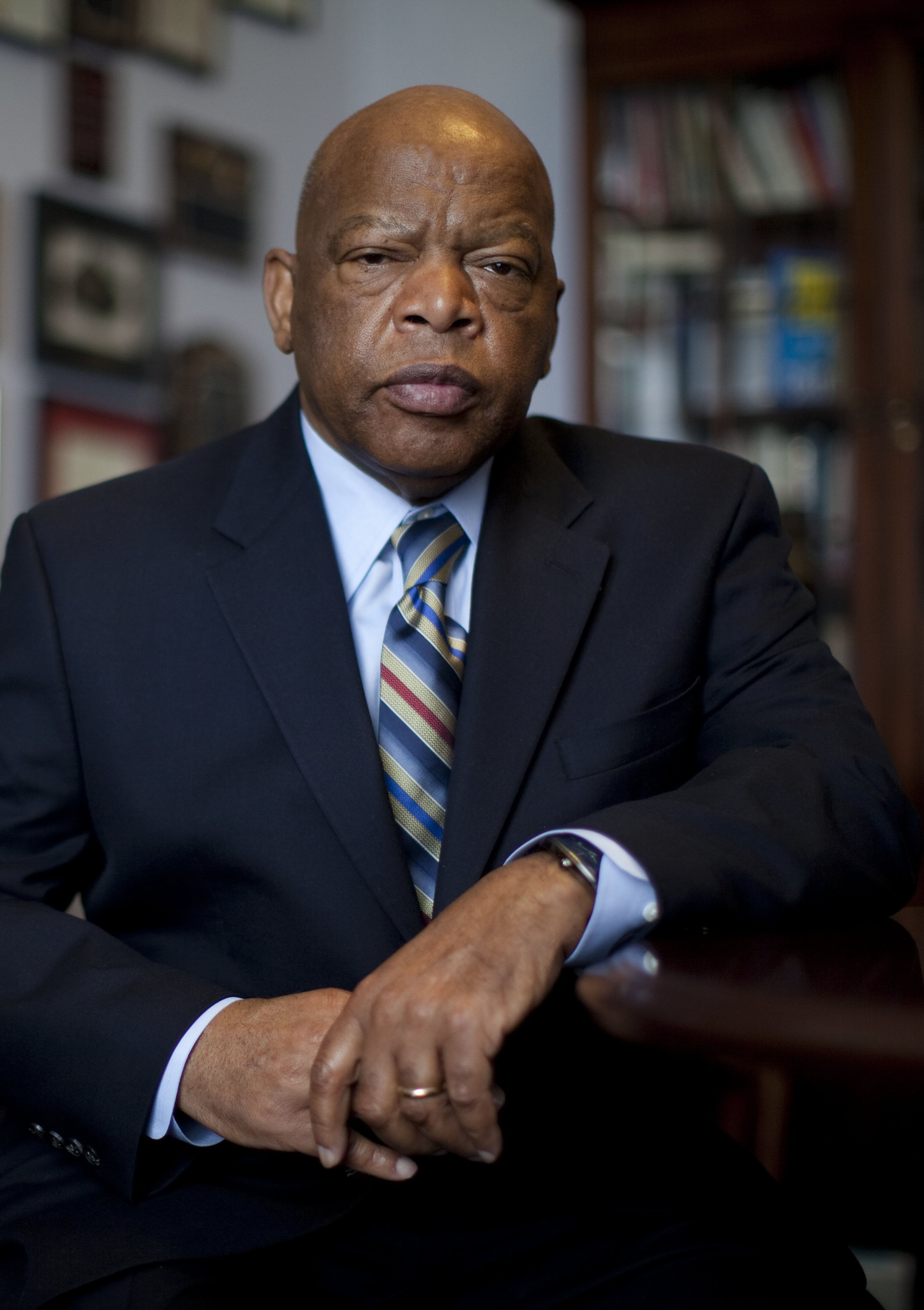
John Lewis: Book One had a response that is just unbelievable. As you may know, schools in more than 40 states are using March: Book One. Michigan State University, along with Georgia State University and Marquette University, have made it required reading for all their freshmen students. There's schools and colleges and libraries all across the country that want us to participate in some kind of reading program, speaking to students, community group about March.
I think that Book Two is going to have a similar impact, if not greater. It's larger, it's a beautiful book. The cover just reached out and grabbed me – the burning of the bus in Anniston, Alabama.
The story of the Freedom Ride, the Birmingham campaign, the march on Washington, the standing in line in theaters in Nashville – it's very similar to Book One in the structure and the philosophy, you may call it the way of peace, the way of love, the way of non-violence. It's there, throughout the book.
Get the best comic news, insights, opinions, analysis and more!
Nrama: Tell me a little about your experience in working with Andrew and Nate in turning this into a comic.
Lewis: Andrew is so smart and so gifted. He's done a lot of research – he's interviewed me, he talked with me, he put it in the comic book form, and he sent the written pages to Nate.
And Nate is gifted as well...he just has such a keen sense of what was right. He takes the words off the page that we send to him and he makes them move – he makes it plain, makes it simple. You can have the words, but he gives them meaning with his artwork.
Nrama: You mentioned the burning of the bus earlier – there are some harrowing moments recalled in this volume. What was the most startling of these events to see rendered in Nate's art – experiencing them again in this illustrated format?
Lewis: Well, you have to make up your mind that you're going to tell everything – just tell it all.
From the moment you have Washington, D.C. in May of 1961, traveling through the South, and interracial bashing, you have to make it come alive, so people can see blacks and whites sitting together on the bus, and the signs and symbols of segregation, and how we were tested at the Greyhound bus station, and how we were beaten and left lying in a pool of blood, and how the police came and said, "Do you want to press charges?" and we said, "No, we come in peace. We come in love."
In Montgomery, that first line of hurt and bloodied…it was dangerous. And you try to show that. It was very, very dangerous for a group full of young blacks and whites to be traveling through the South, trying to desegregate the means and ways of public transportation. And I find if you see the images, you understand we're just lucky that we all survived.
Nrama: That's something I took away from the book – the hostility of America at that time is very much like a horror movie, there's just danger around every corner.
And that depiction brings up something I wanted to ask about. There have been some works recently that have discussed the history of the African-American experience in America such as 12 Years a Slave and obviously Selma.
And I'm white, and I'm from North Carolina, and sometimes I'll talk about those works to friends who are also white, and I'll get a reaction of, "Why do people have to bring that up? I've never used the N-word, I don't want to see or read something that'll just make me feel guilty about something that happened before I was even born."
Lewis: Hmm.
Nrama: Now, that's not a reaction I agree with by any means. But given your experiences and your work with March, I wanted to get your take on why you feel it's important to remind people of this aspect of our country's history, particularly in light of many racially-charged incidents of violence and protest over the past few years.
Lewis: I think it's important for all Americans – and it doesn't matter if you're black or white or Asian American or Native American – so we do not repeat our dark path, and also so we can understand and be informed about what has happened.
And through that, we can inspire a new generation. So we must not go back, we must continue to go forward, and build a truly multi-racial, multi-cultural society.
So many people growing up in America today – and growing up all over the world – can learn so much from what happened, and how it happened. A group of people, black and white, from all kinds of different backgrounds, believed that they could change America. And they joined together and worked together to make it happen.
Nrama: That's a good transition into a guest question I have from author Junot Díaz of The Brief Wondrous Life of Oscar Wao and This is How You Lose Her.
Díaz asks, "Do you think that the U.S. in general has become more hostile to civil rights? What would you make of a U.S. where more people believe in angels than in institutional racism?"
Lewis: Now, I think America has become more in tune with what the civil rights movement was all about. But it doesn't mean the job is finished. In the struggle to redeem America, to make it better, there will be setbacks. There will be disappointment. But we must steer, stay focused, and keep eyes on the prize to create what Dr. King called "The Beloved Community:" a truly multi-racial democratic society.
We have to keep that goal, and have to pace ourselves, and look to the future. And we have to be reminded of how we got to where we are today, and continue to move forward. So for those who say, "Nothing has changed," I feel like saying, "Come and take a walk in my shoes."
Our country is a better country. And we are a better people. And we still have problems. But it doesn't make sense to say, "Nothing has changed. Why continue?" We have to continue to work to make a multi-racial society.
Nrama: You've talked about how seeing the comic book of Martin Luther King Jr. that Top Shelf has reprinted was what got you into the civil rights movement, and now you're doing March. What do you feel is unique about the comic book format, and what do you feel makes it speak to people?
Lewis: Without a doubt, the comics format made me the man I am today. I remember reading the book, 14 pages and sold for 10 cents, and as a student with other students in Tennessee, we read the book and had a protest using the lessons from that book.
It was our guide – it was like our road map. And this is my belief – March, with its three books, will be a road map and a guide to many people in the future, especially young people. Especially children.
Zack is a comics journalist, who has written primarily for Newsarama, GamesRadar, and Indy Week. His words have also appeared in The Washington Post, AXS, VOX, The Sports Network, Gambit, and more.
